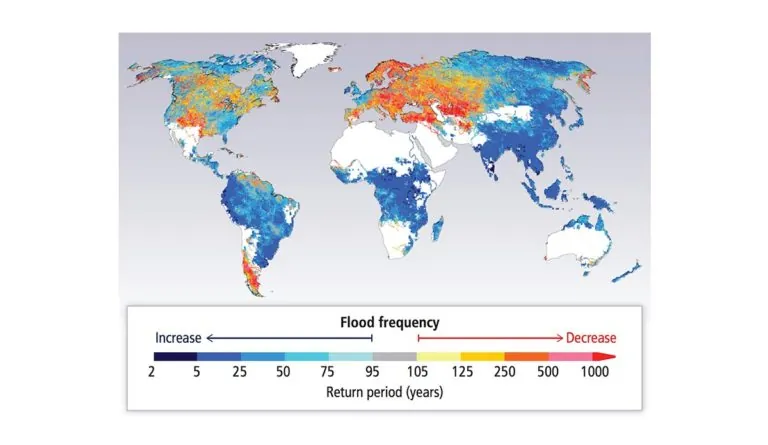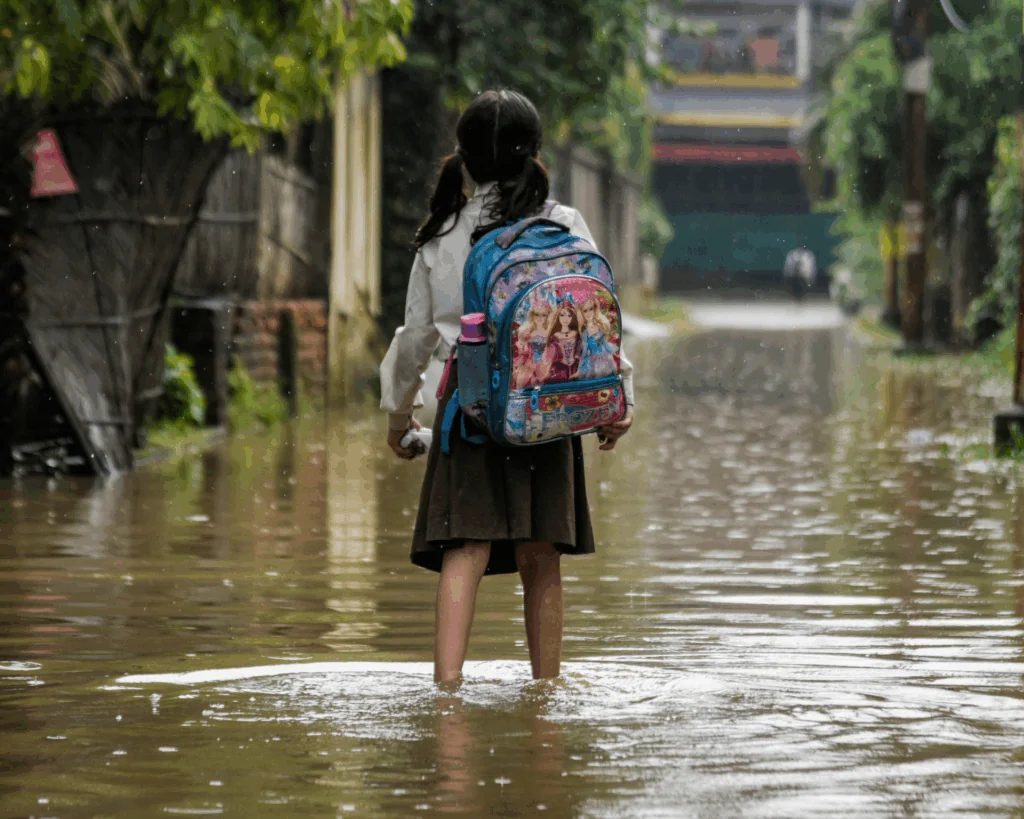Global Flood Risk under Climate Change
Globally, flood frequency is predicted to increase across 42% of the earth’s land regions. Areas expected to be most affected are low-income countries in the lower latitudes.

Read Time: 2 minutes
Published:
In a dark week of early September, in 2013, Colorado’s Front Range was hit with a 100-year flood. Over eight days, nineteen counties were flooded with a year’s-worth of rain water. Thick mudslides hauling large boulders destroyed thousands of homes, and basements were flooded with dirt and debris. Eight lives were lost. The flood was unprecedented, baffling meteorologists by its magnitude. In the face of climate change, flooding events such as these may become more frequent. Dr. Yukiko Hirabayashi and her research team calculated how flooding frequency around the world may change in the next 100 years.
The map above presents the global flood risk from rivers at the end of the 21st century. The research team used eleven climate models to calculate how floods with a discharge magnitude of a 20th century 100-year flood may occur in the 2080s. Areas of darker blue have a higher probability (lower return period) of a 20th century 100-year flood occurring within a given year. So, instead of these century floods occurring ‘once every 100 years’ (with a 1% chance of annual occurrence), they may turn into ‘decade’ or ‘half-century’ floods (every 10-50 years; with a 10%-2% chance of annual occurrence).
So, instead of these century floods occurring ‘once every 100 years,’ they may turn into ‘decade’ or ‘half-century’ floods.
Globally, flood frequency is predicted to increase across 42% of the earth’s land regions. Select U.S. states (Florida, Georgia, and Virginia) and the continents of South America, Africa, and Asia will need to prepare for extreme flooding every 2-50 years (a 50%-2% chance of annual occurrence). Between 27–93 million people are expected to be affected by flooding.
Areas expected to be most affected are low-income countries in the lower-latitudes. These countries are, on average, more densely populated and less equipped to handle extreme weather than wealthier countries. As the world’s population is expected to increase, the impact of climate change on human populations will become dire. Governments need to focus on goals, such as those laid out by the Paris Climate Agreement, that reduce carbon emissions and prevent or mitigate the threat of future catastrophic flooding.
Databyte via Freshwater Resources from the AR5 Climate Change 2014: Impacts, Adaptation, and Vulnerability Report. Intergovernmental Panel on Climate Change (IPCC).



